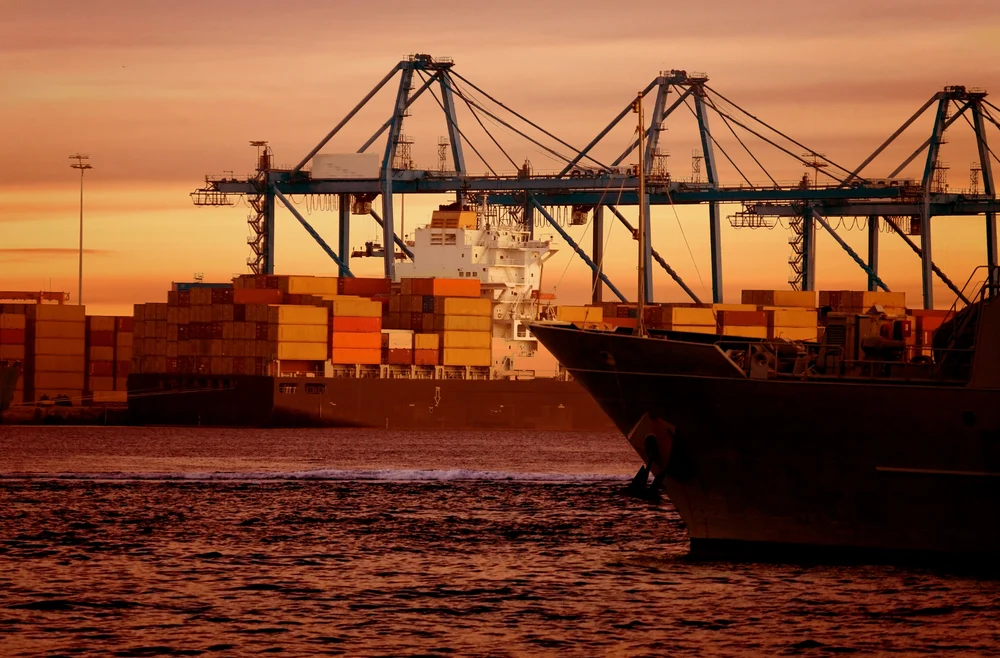No longer an unseen network running smoothly supporting the backbone of the global economy, the pandemic unexpectedly brought logistics and the supply chain to the forefront of everyone’s mind. From the toilet paper scarcity of 2020 to the labor shortage to overflowing warehouses to the backup of shipping containers at the Ports of Los Angeles and Long Beach more recently, supply chain disruptions became a focal point of the national conversation for much of 2021. Per the 2022 State of the Third-Partly Logistics (3PL) Industry Report, supply chain disruptions are expected to continue through the new year. As we brace for the continued challenges of the supply chain, let’s recap the different facets of the current supply chain crisis and how we got here.
Early 2020 – The Beginning of the Pandemic
When the COVID-19 pandemic struck in early 2020, the supply chain saw the first significant disruption as people and businesses had to cut back on their activity or shutdown entirely for a brief period. This period of halted production in factories across the globe led to a massive wave of layoffs across all industries but especially in manufacturing and logistics, resulting in a reduction in shipping that affected delivery times across the world.
Even though fewer goods were being produced and a depressed workforce had less money to spend, demand for goods did not drop as expected but actually shifted. As the demand for personal protective equipment (and toilet paper) rose–much of which is manufactured in China–the first shipping container crisis arose where there was a shortage of shipping containers in exporting countries and a surplus of empty shipping containers amassing in ports around the world, just not where they needed to be.
Late 2020 – The Pandemic Continues
The shift in demand for goods led to a decrease in demand for experiences such as attending events, going out, or eating at restaurants. However, there was an increase in demand for durable goods including office furniture and electronics as the remaining workforce shifted to working from home. This demand, coupled with an increase in spending money from government stimulus programs, spurred the rapid growth of ecommerce as consumers turned to buying online in record numbers. In fact, according to the New York Times, Amazon sold 57% more items from April to June 2020 than it had in 2019.
Trying to meet this increase in demand, factories started pumping out goods quicker than ports could handle them; now, instead of being full of empty shipping containers needed elsewhere, U.S. ports were piling up with exports from Asia with too small of a workforce to unload them and too few truck drivers to transport those goods.
Early 2021 – Labor Shortage Continues
In addition to ports being full and shipping containers dotting the horizon in most ports across the US, the logistics sector experienced a widespread labor shortage, especially with truck drivers. So, even when the Ports of Los Angeles and Long Beach–which account for 40% of shipping containers entering the U.S.–began operating 24/7, there were not enough truck drivers to deliver goods to 3PLs throughout the country.
Third-party logistics (3PL) warehouses also struggled to hire enough people to accommodate the increase in demand. According to the 3PL Warehouse Benchmark Report, finding and retaining workers ranked in the top three challenges for 3PL warehouses for the year, and rising labor costs–where 73% of 3PLs reported labor cost increases since 2020–only made hiring more difficult for the logistics industry.
Late 2021 – Peak Season Issues
While the labor shortage continued, the supply chain saw increased disruptions of shortages, especially of computer chips, that led to shortages of other goods like computers, automobiles, and even medical devices. The seemingly endless cycle of shortages of diverse types of goods shifted both consumer behavior and manufacturing.
For consumers, this meant buying early and buying in abundance to counteract the shortages, basically extending the peak season; for the manufacturing industry, this meant a turn toward “just in time” (JIT) manufacturing, where items are created on-demand as opposed to in surplus. This turn to JIT manufacturing and the scarcity of certain goods domestically resulted in an increase in demand for imported goods, an industry that already felt the strain of the labor shortages.
2022 – What to Expect
Is the end in sight? The answer is hopefully later this year, as long as manufacturing remains open and consumer demand levels out to more sustainable levels. While it is unlikely we will see supply chain bottlenecks like the toilet paper shortage again, the continued labor shortage, pressure at the ports, and the Amazon effect all make beating this supply chain crisis exceedingly difficult.
In this climate of uncertainty within logistics, the 3PL’s role as a partner and advisor to its customers has becomes increasingly important. 3PLs can leverage their strong relationships with shipping companies and offer a bird’s eye view of the industry for their customers. Additionally, 3PLs can use analytics as a method of risk management for their customers, especially by relying upon warehouse management system (WMS) software.
WMS software is the perfect tool for navigating this complicated supply chain with built-in reporting, data and analytics, inventory management, and more. Especially as the industry continues to undergo this crisis, a WMS is essential for alleviating labor shortage concerns and future-proofing 3PLs against any future unexpected changes to the supply chain.
To learn more about supply chain disruptions and how best we can combat them this year, check out the 2022 State of the Third-Party Logistics Industry Report.
-
You’ll read about:
Be the first to know
Subscribe to our newsletter





